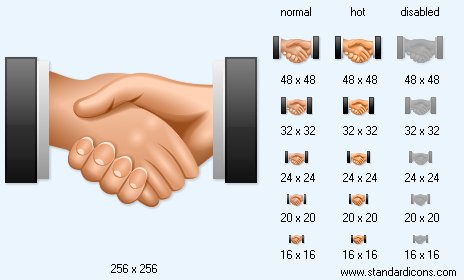


|
| ||||||||
|
|
Cooperation Icon |
|
Icon sizes: 48x48, 32x32, 24x24, 20x20, 16x16, 512x512, 256x256, 128x128, 64x64
File formats: ICO, GIF, PNG, BMP
Picking The Correct Image Format For Your Icons.
There are several file formats that can be used for storing web graphics and for a relatively raw designer this can often change into a sizable pain because you should understand how to utilize a specific file format, offered in this article is an explanation of the benefits and drawbacks of some well known image formats.If you are keen on graphic making or want to create graphical representations for your web page, it is crucial to learn about the various image formats and their attributes so that you can use the right file type for an image. Normally used file formats for pictures are GIF, JPEG and PNG, all of these formats has its own traits so lets discuss the pros and cons of using these formats, the type of image that would live up to the requirements of your site and optimizing your icons for the internet.
GIF: The full form is Graphics Interchange Format; the image format is one of the most commonly used file types. The reason for its popularity is its small size which makes uploading less time consuming. Also like JPEG, data is not lost in this format ; this equates to the fact that you can save the image without using up a lot of space and messing the quality of the images. GIF offers transparency support in images, it is the most suitable image formats for picture creation. Unlike the other image formats, animation is also offered in GIF. If you wish to go for GIF file optimization, it is necessary to keep the size of the image small; it would be best that you pick a 32 color palette to create the least possible size.
JPEG: This is short for Joint Photographic Experts Group; the image format is commonly called JPG and is frequently used in web designing. One of the main advantages of incorporating this type of format is that you could store the graphics in true color that offers you as many as 16 million colors; making this file format suitable for use with photographs and images that include vast color range. One of the issues of using JPG is the loss of details that is encountered each time the file is stored; this means that the image is marred by clarity issues and a lot of information may be lost. Unlike the GIF format, transparency support is not offered in this file format. If you have chosen an advanced image editor such as the Adobe Photoshop, you will be able to pick the image quality and the size of the JPG file ; however, it is important to comprehend that a lower resolution equates to a smaller size, which is easy to upload.
PNG: Is stands for Portable Network Graphics and is a fairly fresh file format. PNG is offered in two forms; PNG-8 which has a 8 bit color format and the PNG-24 which uses 24 color images. PNG-8 can curtail the size images with great detail and without the normal loss of data observed in in GIF images; this leads to improved picture quality and quick uploads. However, PNG-24 is not as efficient as JPG when you have to store photos and other illustrations that require a vaster palette of colors. The image format is not limited by loss; this means that the photograph retains its clarity and quality. PNG-24 supports transparency and you can use various levels of of the feature in this format. When you use this file format the graphics are better looking because they do not have the tell tale jagged edges when placed against a background with contrasting colors like GIF files.
Copyright © 2009-2022 Aha-Soft. All rights reserved.
|
